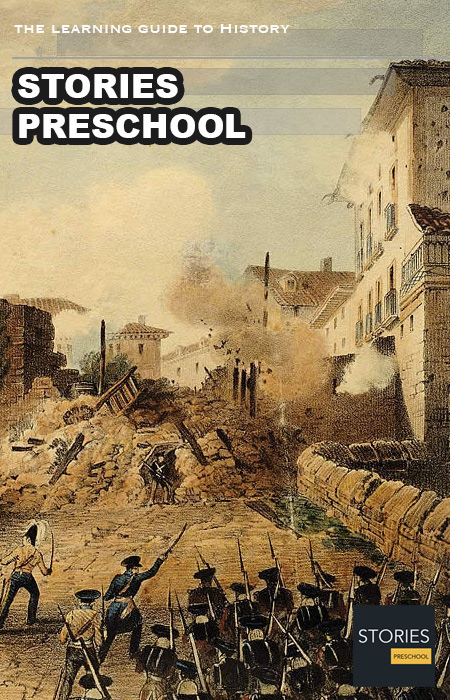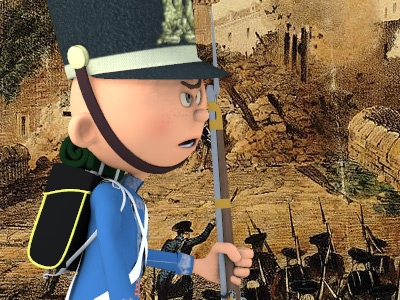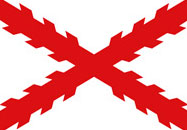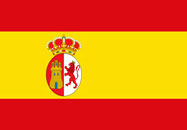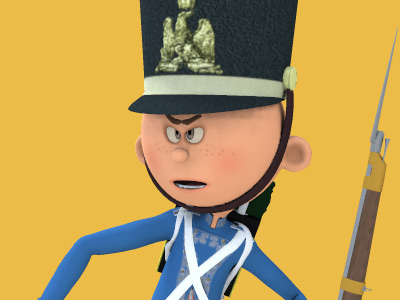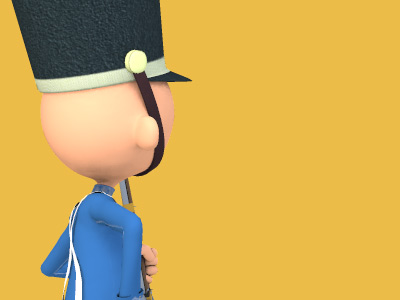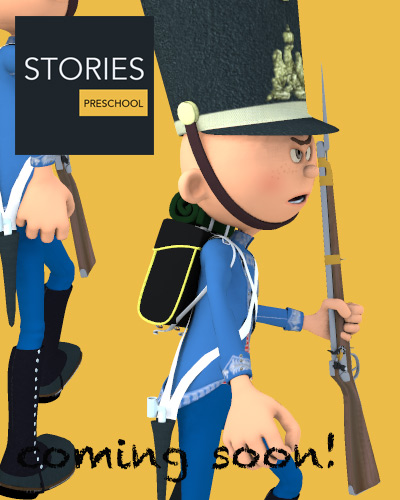First Carlist War (1833 to 1839)
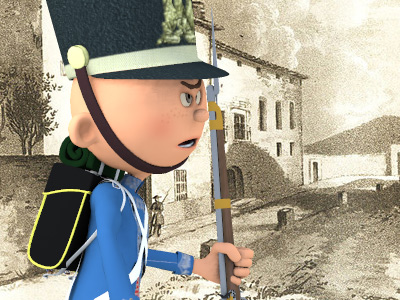
The First Carlist War was a civil war in Spain from 1833 to 1839, fought between factions over the succession to the throne and the nature of the Spanish monarchy. It was fought between supporters of the regent, Maria Christina, acting for Isabella II of Spain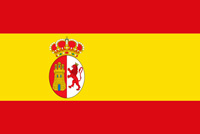 Spain or the Kingdom of Spain, is a country primarily located in southwestern Europe with parts of territory in the Atlantic Ocean and across the Mediterranean Sea. A major country of the Age of Discovery, Spain began the colonization of the New World in 1492 developing one of the largest empires in history and underpinned the emergence of a global trading system primarily fuelled by precious metals., and those of the late king's brother, Carlos de Borbón (or Carlos V). The Carlists supported return to an absolute monarchy.
Spain or the Kingdom of Spain, is a country primarily located in southwestern Europe with parts of territory in the Atlantic Ocean and across the Mediterranean Sea. A major country of the Age of Discovery, Spain began the colonization of the New World in 1492 developing one of the largest empires in history and underpinned the emergence of a global trading system primarily fuelled by precious metals., and those of the late king's brother, Carlos de Borbón (or Carlos V). The Carlists supported return to an absolute monarchy.
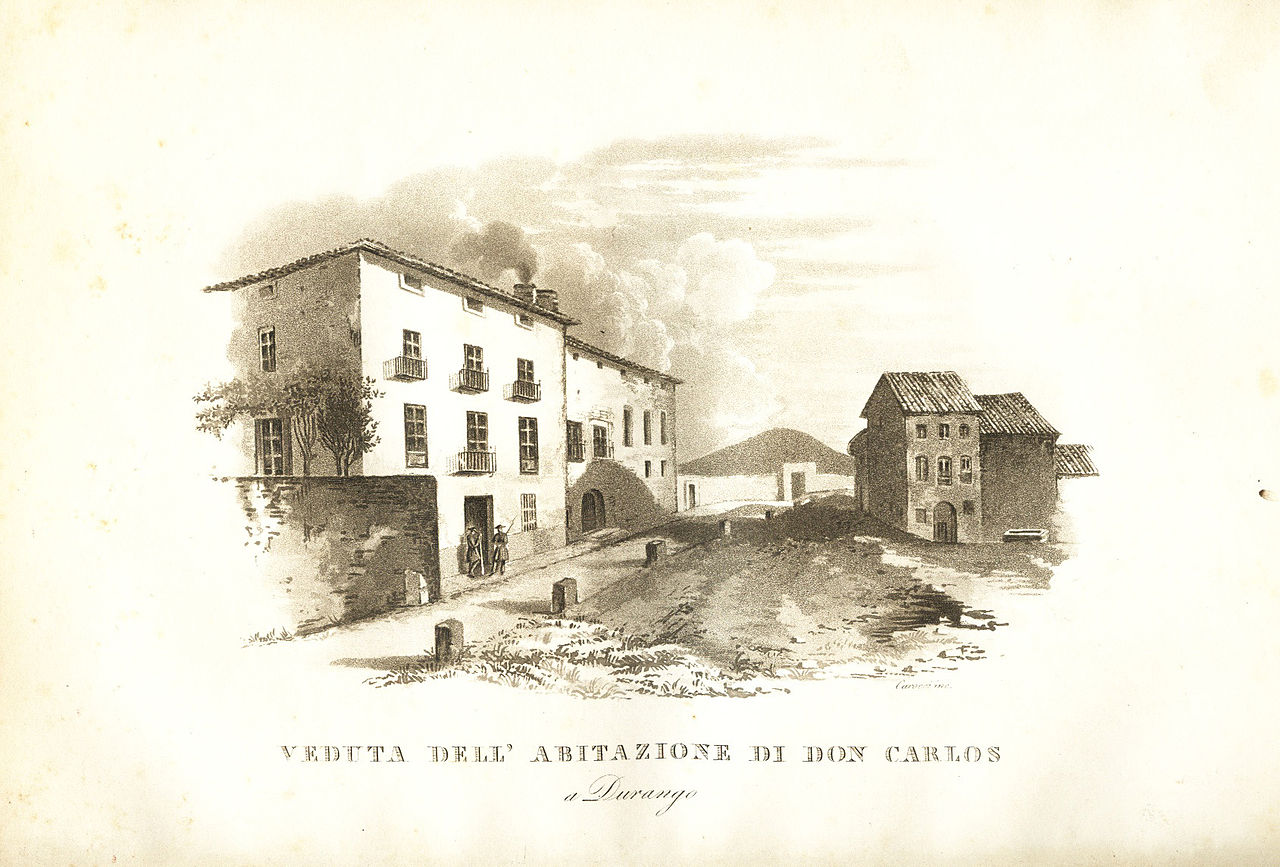
Carlos' seat at Durango in 1837

Carlos' seat at Durango in 1837
( Click image to enlarge)
Historical background
At the beginning of the 19th century, the political situation in Spain was extremely problematic. During the Peninsula War, the Cortes met in Cádiz and elaborated the Spanish Constitution of 1812, at that point possibly the most modern and most liberal in the world. After the war, when Ferdinand VII returned to Spain (1814), he annulled the constitution in the Manifest of Valencia, and became an absolutist king, governing by decrees and restoring the Spanish Inquisition, abolished by Joseph I, brother of Napoleon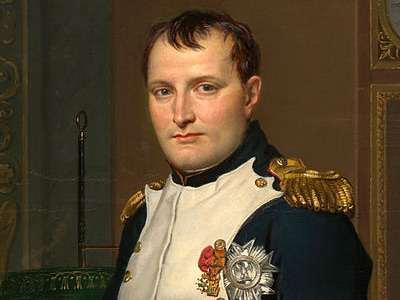 Napoleon Bonaparte (1769-1821), was a French military and political leader who rose to prominence during the French Revolution and led several successful campaigns during the French Revolutionary Wars. As Napoleon I, he was Emperor of the French from 1804 until 1814, and again in 1815. One of the greatest commanders in history, his wars and campaigns are studied at military schools worldwide. Napoleon Bonaparte ».
Napoleon Bonaparte (1769-1821), was a French military and political leader who rose to prominence during the French Revolution and led several successful campaigns during the French Revolutionary Wars. As Napoleon I, he was Emperor of the French from 1804 until 1814, and again in 1815. One of the greatest commanders in history, his wars and campaigns are studied at military schools worldwide. Napoleon Bonaparte ».
The 1805 Battle of Trafalgar had all but shattered the Spanish navy, with the Peninsular War leaving the Spanish society overwhelmed by continuous warfare and badly damaged by looting. While the Spanish Empire The Spanish Empire was a colonial empire governed by Spain and its predecessor states between 1492 and 1976. One of the largest empires in history, it was the first to usher the European Age of Discovery and achieve a global scale, controlling vast territory. It was one of the most powerful empires of the early modern period, reaching its maximum extent in the 18th century. collapsed, the maritime trade trickled to the Americas and Philippines, and Spain's military struggled to keep their colonies, with Mexico getting its independence in 1821. The customary overseas revenue to the metropolis was at a historic low, the royal coffers were empty. Financing (solvency) and recruitment to the military became an overriding concern for the Spanish Crown, with the governments under King Ferdinand VII failing to provide new solutions and stability.
The Spanish Empire was a colonial empire governed by Spain and its predecessor states between 1492 and 1976. One of the largest empires in history, it was the first to usher the European Age of Discovery and achieve a global scale, controlling vast territory. It was one of the most powerful empires of the early modern period, reaching its maximum extent in the 18th century. collapsed, the maritime trade trickled to the Americas and Philippines, and Spain's military struggled to keep their colonies, with Mexico getting its independence in 1821. The customary overseas revenue to the metropolis was at a historic low, the royal coffers were empty. Financing (solvency) and recruitment to the military became an overriding concern for the Spanish Crown, with the governments under King Ferdinand VII failing to provide new solutions and stability.
During the Trienio Liberal (1820-1823), the progressive liberals decided to resort to the international money lenders to revert the economic meltdown Spain was facing. They turned to Paris, and particularly London, where many liberals (many of them Freemasons) had fled on Ferdinand VII's comeback (1814). In London and Paris, the liberals ruling (shortly) Spain engaged in negotiations with the financiers Nathan Rothschild and James Rothschild. They bailed out the Spanish liberal regime, with Great Britain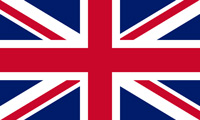 The United Kingdom of Great Britain and Ireland was a sovereign state in Northwestern Europe that comprised the entirety of the British Isles between 1801 and 1922. The United Kingdom, having financed the European coalition that defeated France during the Napoleonic Wars, developed a large Royal Navy that enabled the British Empire to become the foremost world power for the next century. also supporting it on its last stage, not so much on the strength of its liberal tenets but with a vested view to securing the debt engaged in previous years.
The United Kingdom of Great Britain and Ireland was a sovereign state in Northwestern Europe that comprised the entirety of the British Isles between 1801 and 1922. The United Kingdom, having financed the European coalition that defeated France during the Napoleonic Wars, developed a large Royal Navy that enabled the British Empire to become the foremost world power for the next century. also supporting it on its last stage, not so much on the strength of its liberal tenets but with a vested view to securing the debt engaged in previous years.
The 1823 intervention of a reactionary international alliance, the Sacred Alliance, restored Ferdinand VII on the Spanish throne, but the Bourbon king refused to assume the debt incurred by the 1820-1823 liberal rulers with the Rothschilds based in London and Paris. For more than a decade, the pending liberal debt became for Ferdinand VII's negotiators a persistent sticking point with these financiers during talks for new loan requests.
Against a backdrop of on-off bankruptcy and solvency issues, towards the end of his life, Ferdinand VII promulgated the Pragmatic Sanction giving hopes for a liberal rule. Ferdinand VII of Spain had no male descendant, but two daughters, Isabella (later known as Isabella II of Spain) and Luisa Fernanda. So he promulgated the above "Pragmatic Sanction", to allow Isabella to become Queen after his death, returning to traditional rules of Spanish succession. Without the above Pragmática Sanción, Carlos de Borbón, the king's brother, would have normally become king. He and his followers, such as Secretary of Justice Francisco Tadeo Calomarde, pressed Ferdinand to change his mind. But the agonizing Ferdinand kept his decision and when he died on 29 September 1833, Isabella became the legitimate queen. As she was only a child, a regent was needed, so her mother Queen Consort Maria Christina was appointed.
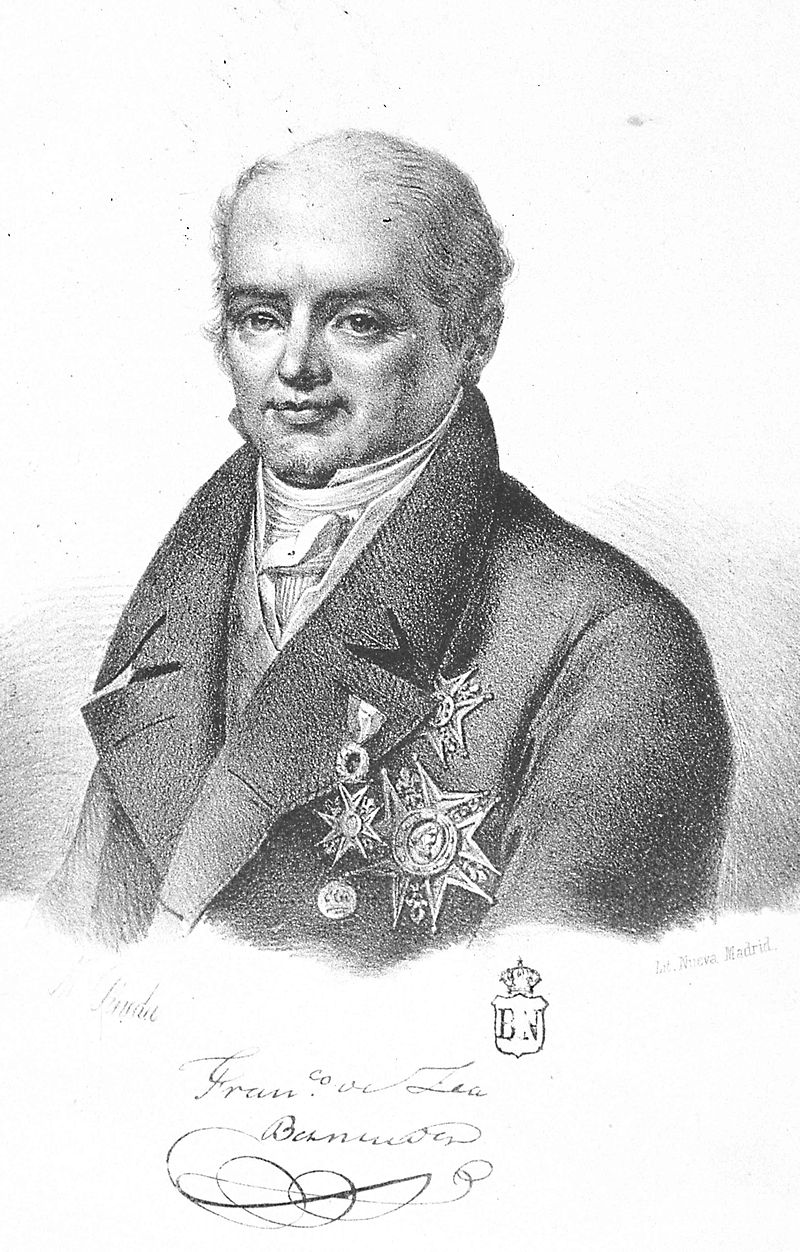
A strong absolutist party did not want to lose its position. Its members knew that regent Maria Christina would make liberal reforms, so they looked for another candidate for the throne; and their natural choice, with the background of the Salic Law, was Ferdinand's brother Carlos. The differing views on the influence of the army and the Church in governance, as well as the forthcoming administrative reforms paved the way for the expulsion of the ultra-Conservatives (absolutists advocating for Carlos) from the higher governmental circles, not that it opened the doors to the most progressives.
Cea Bermudez's centrist government (October 1832-January 1834) inaugurated a period of opening and return to Spain of many exiles in London and Paris, e.g. Juan Álvarez Mendizabal (born Méndez). The rise of Cea Bermudez was followed by a closer collaboration and understanding with the Rothschilds, who in turn clearly encouraged the former's reforms and liberalization, i.e. the new liberal regime and the incorporation of Spain to the European financial system. However, with state coffers yet again empty, the impending war, and the Trienio Liberal loan issue with the Rothschilds still not settled, Cea Bermudez's government fell.
Confronted with war breaking out in Basque territory and before matters ran out of control, the envoy of regent Maria Cristina's government, the Marquis of Miraflores (a middle-of-the-road liberal), contacted London's City bankers to open a line of credit with the Spanish Treasury (thus pay the next installment of external debt due in July 1834 and get new credit), as well as the British Government in order to garner its political endorsement. An agreement with Nathan and James Rothschild and a loan advance of 500,000 pounds to the Marquis of Miraflores paved the way to the establishment of the Quadruple Alliance that sealed British and French The July Monarchy, officially the Kingdom of France, was a liberal constitutional monarchy in France under Louis Philippe I, starting on 26 July 1830, with the July Revolution of 1830, and ending 23 February 1848, with the Revolution of 1848. It marks the end of the Bourbon Restoration (1814–1830). It began with the overthrow of the conservative government of Charles X, the last king of the House of Bourbon. protection to the Spanish government, including military operations (April 1834).
The July Monarchy, officially the Kingdom of France, was a liberal constitutional monarchy in France under Louis Philippe I, starting on 26 July 1830, with the July Revolution of 1830, and ending 23 February 1848, with the Revolution of 1848. It marks the end of the Bourbon Restoration (1814–1830). It began with the overthrow of the conservative government of Charles X, the last king of the House of Bourbon. protection to the Spanish government, including military operations (April 1834).
As written by one historian:
The first Carlist war was fought not so much on the basis of the legal claim of Don Carlos, but because a passionate, dedicated section of the Spanish people favored a return to a kind of absolute monarchy that they felt would protect their individual freedoms (fueros), their regional individuality and their religious conservatism.
A vivid summary of the war describes it as follows:
The Christinos and Carlists thirsted for each other's blood, with all the fierce ardour of civil strife, animated by the memory of years of mutual insult, cruelty, and wrong. Brother against brother – father against son – best friend turned to bitterest foe – priests against their flocks – kindred against kindred.
The autonomy of Aragon, Valencia and Catalonia had been abolished in the 18th century by the Nueva Planta Decrees that created a centralised Spanish state. In the Basque Country, the kingdom status of Navarre and the separate status of Álava, Biscay, and Gipuzkoa were challenged in 1833 during the central government's one-sided territorial division of Spain. The resentment against the growing intervention of Madrid (e.g. attempts to take over Biscayan mines in 1826) and the loss of autonomy was considerably strong.
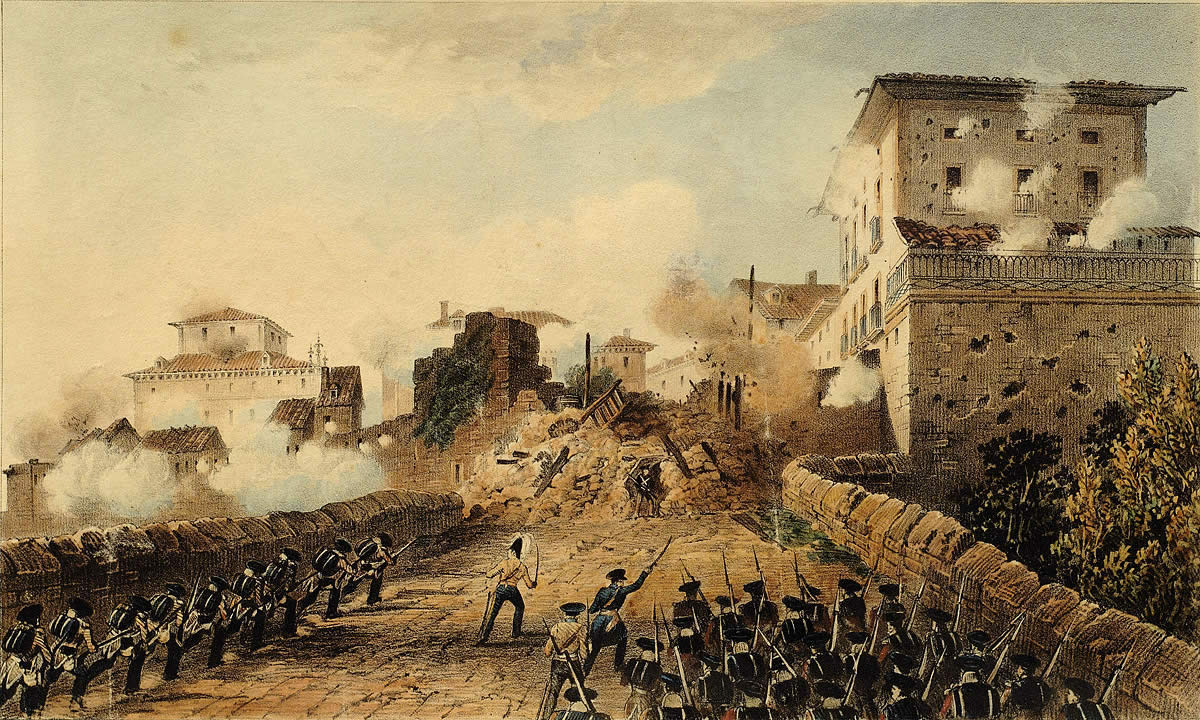
Battle of Behobia, May 1837

Battle of Behobia, May 1837
( Click image to enlarge)
Battles of the First Carlist War
- Battle of Alsasua (1834)
- Battle of Alegría de Álava (1834)
- Battle of Venta de Echavarri (1834)
- Battle of Mendaza (1834)
- First Battle of Arquijas (1834)
- Second Battle of Arquijas (1835)
- Battle of Artaza (1835)
- Battle of Mendigorría (1835)
- Battle of Arlabán (1836)
- Battle of Terapegui (1836)
- Battle of Villarrobledo (1836)
- Battle of Majaceite (1836)
- Battle of Luchana (1836)
- Battle of Oriamendi (1837)
- Battle of Huesca (1837)
- Battle of Villar de los Navarros (1837)
- Battle of Aranzueque (1837)
- Battle of Maella (1838)
- Battle of Peñacerrada (1838)
- Battle of Ramales (1839)
HISTORY
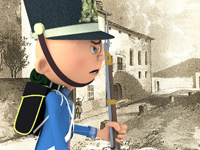
RESOURCES
This article uses material from the Wikipedia article "First Carlist War", which is released under the Creative Commons Attribution-Share-Alike License 3.0.
© Stories Preschool. All Rights Reserved.
